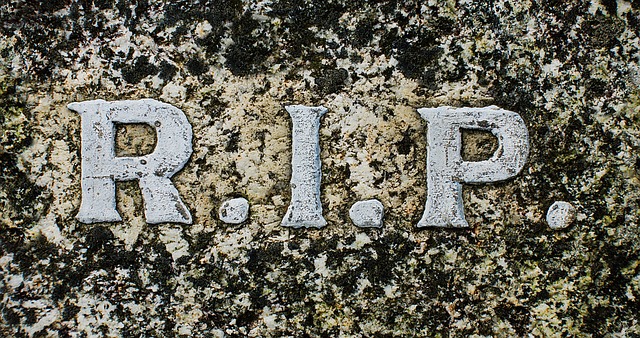
More Tenth-Anniversary FPLG Blog Favorites
10.24.2024 | Linda J. Rosenthal, JD

It wasn’t entirely unexpected.
On the final day of the Supreme Court term, six of the nine justices tossed out the bold August 2022 initiative by the Biden Administration canceling $10,000 (or $20,000) of the student-loan debt of the nation’s neediest borrowers.
Within an hour or so of the Biden v. Nebraska ruling on Friday, June 30, 2023, Joe Biden appeared in the Briefing Room. He lamented that his “… student debt relief plan would have been the lifeline tens of millions of hardworking Americans needed as they try to recover from a once-in-a-century pandemic.” But, he added: “This fight is not over. I will have more to announce when I address the nation this afternoon.”
At 4 pm EDT, the President again spoke from the White House podium. “I believe the Court’s decision to strike down my student debt relief program was a mistake, was wrong,” he said. “I’m not going to stop fighting to deliver borrowers what they need, particularly those at the bottom end of the economic scale. So, we need to find a new way. And we’re moving as fast as we can.”
See also: Joe Biden lays out new student debt relief plan after supreme court ruling (June 30, 2023) The Guardian; Biden Vows to Pursue Student Debt Relief With a Different Law (June 30, 2023) Charlie Savage, The New York Times; Supreme Court rejects Biden student loan forgiveness plan (June 30, 2023, updated 6:31 pm EDT) Robert Barnes & Danielle Douglas-Gabriel, The Washington Post.
Out with Plan A. In with Plan B – soon.
The Administration had already crafted a backup alternative, final except for certain details. They anticipated that the 2003 HEROES Act, the “national emergency” statute that had been used nine times over three years of the COVID-19 pandemic as the legal authority for the student-loan repayment pauses – might not work its charm this time around. The alternative selected is based on the Higher Education Act of 1965, which had been cited with approval by the high-court as a valid way to proceed. But there’s one unfortunate drawback: it wouldn’t begin immediately. There are a series of regulatory hoops to jump through first. (That’s why it wasn’t chosen for Plan A.)
Fast forward to this past Friday morning, July 14th: exactly two weeks after the Supreme Court nixed Plan A. President Joe Biden formally unveiled Plan B. It is an aggressive and multi-faceted return volley, featuring among other goodies a much larger loan-forgiveness feature than Plan A’s. See Biden-Harris Administration to Provide 804,000 Borrowers with $39 Billion in Automatic Loan Forgiveness as a Result of Fixes to Income Driven Repayment Plans, Press Release, U.S. Department of Education.
It’s a lot to chew on all at once. Let’s take a first look.
The last few years, particularly since the start of the pandemic, have been critical in helping the American public recognize how profoundly broken and oppressive the higher-education funding system in this nation has become. See, for instance, America’s Student Loans Were Never Going to Be Repaid (June 13, 2023) Opinion, Laura Beamer and Marshall Steinbaum, The Jain Family Institute, The New York Times; and Why the US Student Loan System Is Broken and What We Can Do About It (November 11, 2022) Jeff Julett, thecuriosityvine,com.
The Biden Administration has so far achieved an impressive record diving into this enormous and intractable problem. See Chart: Understand Student Debt Relief Under President Biden in Do You Qualify for Biden’s $39 Billion Student Debt Cancellation? (July 14, 2023) Tara Siegel Bernard, The New York Times. See also Timeline: Federal Student Loans During the COVID-19 Pandemic (August 9, 2022) Center for American Progress, americanprogress.org.
First, the President repeatedly reapproved the loan-repayment pauses begun at the outset of the pandemic by Congress and the prior Administration. That will soon change, though. Recently, Congress “… passed a law preventing further extensions of the payment pause. Student loan interest will resume starting on Sept. 1, 2023, and payments will be due starting in October….” See COVID-19 Emergency Relief and Federal Student Aid, Federal Student Aid, U.S. Department of Education. Nevertheless, Joe Biden’s July 14th announcement of Plan B includes ways he is softening that blow for at least the next twelve months.
Second, he authorized the U.S. Department of Education to undertake “… massive new initiatives to address some of the failures of the Public Service Loan Forgiveness (PSLF) program and income-driven repayment (IDR), which the department estimated could bring millions of borrowers closer to forgiveness.”
For the past few years, we’ve regularly reported on these developments – with particular emphasis on the PSLF program that’s so important to the nonprofit sector. See our latest update: Good News on Public Service Loan Forgiveness Program (May 16, 2023). It includes links to all of our posts back to the first one: Public Service Loan Forgiveness: Glitches (April 15, 2019). There, we relayed the shocking discovery that only a few of the first batch of public-service workers applying for loan forgiveness at the 10-year trigger date were approved for the relief.
If you’re been thoroughly confused by all of this including the whiplash-inducing developments of the past two weeks, you’re not alone. In Twists and Turns in 2022’s Nonprofit News (December 31, 2022), we commiserated last New Year’s Eve: “[T]he general public [had] come to be generally aware that ‘something’ big might be happening to deal with the crushing burden of student debt.” But exactly what that “something big” may turn out to be is … frustratingly fuzzy.
That’s because, simply put, “student-loan relief and reform” has involved significant activity and progress – (and some setbacks) – on at least three separate – but simultaneous – tracks:
While the Public Service Loan Forgiveness Program continues to be the primary issue of interest to the nonprofit community, all three tracks are important. There is, and likely will continue to be, a serious staffing shortage at nonprofit organizations. In addition to the Great Resignation and other troublesome trends, there is a generational time bomb already in place. The sector has a disproportionate number of staff at or near retirement age. And, of course, there’s burnout. There’s always burnout; it’s not going away any time soon.
For all these reasons, it’s important to promote and watch for any and all government policies and actions that will tend to reduce the burden of student-loan debt for talented new graduates. It may enable more of them to choose nonprofit careers over higher-paying jobs in the for-profit or government sectors.
Plan A was rolled out in August 2022 by the Secretary of Education, Michael Cardona, after careful legal research and analysis. See The Secretary’s Legal Authority for Debt Cancellation (August 23, 2022) Opinion Letter, DOE General Counsel.
There was little doubt that critics would jump on it right out of the gate. The challenge by six states was fast-tracked to the Supreme Court for ruling by the end of the October 2022 Term.
The June 30th ruling is of interest now primarily to legal scholars, who carefully follow each thread of the Roberts Court decision-making process. See for instance: Supreme Court strikes down Biden student-loan forgiveness program (June 30, 2023, 12:31 pm EDT, updated 4 pm EDT) Amy Howe, SCOTUS Blog.
Otherwise, it’s old news. Everyone moved on immediately. See, for instance: Joe Biden lays out new student debt relief plan after supreme court ruling (June 30, 2023) The Guardian; Biden Vows to Pursue Student Debt Relief With a Different Law (June 30, 2023) Charlie Savage, The New York Times; Supreme Court rejects Biden student loan forgiveness plan (June 30, 2023, updated 6:31 pm EDT) Robert Barnes & Danielle Douglas-Gabriel, The Washington Post.
On a separate point, there had been a vague but simmering worry rumbling through the nonprofit community that an adverse ruling in Biden v. Nebraska might somehow throw a monkey wrench into the Public Service Loan Forgiveness Program which – of course – includes full cancellation at the end of the 10-year work-requirement period.
As it happens, the PSLF was not only left alone, but the majority made a particular point of stressing that nothing in their ruling would adversely affect “the powerful incentive supporting employment at charitable nonprofits and governments,” the highlight of which is a total loan cancellation after ten years of public-service employment. See Public Service Loan Forgiveness Untouched by Supreme Court Student Debt Rulings, National Council of Nonprofits, Jun. 30, 2022; see also, NCN’s bi-weekly newsletter, Nonprofit Champion (July 10, 2023): The PSLF Program “… has even gotten better in recent days – while still more improvements are under consideration.”
What is in Plan B and how will it work?
On July 14, 2023, at the formal unveiling of the new plan for student-loan relief, President Biden said: “I have long said that college should be a ticket to the middle class – not a burden that weighs down on families for decades.” And starting immediately, his Administration is “…delivering on that commitment …”
A summary of the details is included in the DOE Press Release accompanying this launch: Biden-Harris Administration to Provide 804,000 Borrowers with $39 Billion in Automatic Loan Forgiveness as a Result of Fixes to Income Driven Repayment Plans (July 14, 2023). “The Department of Education … today will begin notifying more than 804,000 borrowers that they have a total of $39 billion in Federal student loans that will be automatically discharged in the coming weeks….”
These “[e]ligible borrowers will be [immediately] informed by the Department that they qualify for forgiveness without further action on their part. Discharges will begin 30 days after emails are sent.”
The Biden-Harris Administration makes a point of emphasizing that it had already “…approved more than $116.6 billion in student loan forgiveness for more than 3.4 million borrowers” over the past two years. That includes substantial work fixing the extensively broken Income-Driven Replacement (IDR) Program.
Going forward, an important element of Plan B is the lowering of the percentage amount due each month under the IDR plans: from 10% of income after necessary living expenses, down to 5% after those eligible expenses. Another change – a new cap of 20 or 25 years of payment followed by cancellation of the balance – may mean that soon we will no longer read about senior citizens having their Social Security checks seized.
Plan B – (our name, not the DOE’s) – has many exciting parts, but is not easily summarized in a “first-look” blog post offering only tidbits “to chew on.”
So, for more information, perhaps in easier-to-digest portions, you may want to consider additional amuse-bouches:
Remember that this Plan B is distinct from the PSLF Program, which is proceeding on its own track. There are important new final regulations that went into effect on July 1, 2023; see Education Department to reduce ‘red tape’ on public service loan forgiveness, making it easier for borrowers to qualify (October 25, 2022) Jessica Dickler, CNBC.com
The Department of Education has a special, dedicated website, with current information and instructions on the Public Service Loan Forgiveness Program: [“New rules for the PSLF program have started. We’ll update this page as we continue to improve the program over the next year….Additionally, we’re working to apply changes announced in April 2022, as part of the payment count adjustment. These changes mean that borrowers with federally-managed loans may still see an increase in their payment counts toward income-driven repayment forgiveness and PSLF.”]
– Linda J. Rosenthal, J.D. FPLG Information & Research Director
